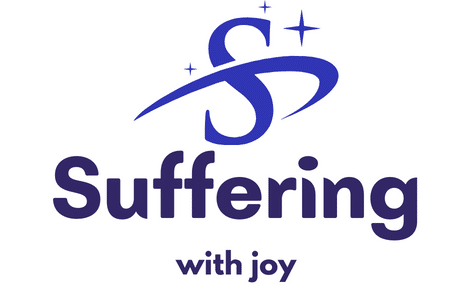In the rapidly evolving field of education, technology is playing a significant role in reshaping learning methods, and language education is no exception. The traditional classroom-based model is being challenged by technological advancements that are altering how learners engage with language education. In particular, AI-powered language tutoring apps are creating a buzz in the industry.
This article explores this emerging trend by examining whether AI-driven language learning applications can surpass traditional methods in terms of fluency outcomes. We will delve into the capabilities of these AI-powered tools, their impact on learners, and the implications for the future of language education.
Cela peut vous intéresser : What Is the Potential of Blockchain in Securing Patient Health Records in the UK?
The AI Revolution in Language Learning
Artificial Intelligence (AI) is increasingly being applied in every aspect of our lives, including education. AI-powered language tutoring apps, in particular, are dramatically changing the landscape of language education. They offer personalised learning experiences, instant feedback, and a variety of content that can be accessed at any time, making them attractive options for language learners.
These apps leverage AI to deliver a tailor-made learning journey. They adapt to the learners’ pace and proficiency, focusing on their areas of weakness and reinforcing their strengths. This approach contrasts with traditional classroom-based methods, where instruction is often standardised regardless of individual students’ abilities or requirements.
A voir aussi : Can Smart Lens Technology Revolutionize the Way We Interact with Augmented Reality?
Enhancing Fluency through AI-Powered Apps
AI-powered language tutoring apps are built to enhance the learners’ fluency in their target language. They do this through a blend of skills training which includes reading, writing, listening, and speaking. These apps provide a holistic approach to language learning, which is essential for achieving fluency.
The apps use AI to analyse the learners’ performance in real time, provide instant feedback, and adjust the learning content based on their progress. This feedback mechanism is critical for improving language skills since it allows learners to correct their mistakes instantly. Furthermore, these apps offer a wide array of content ranging from academic texts to everyday conversations, providing a rich learning experience.
Engaging Learners with AI
One of the main advantages of AI-powered language tutoring apps is their ability to engage learners. Traditional language education often relies heavily on rote learning, which can lead to student disengagement. On the other hand, AI-powered apps aim to make language learning an enjoyable and engaging process.
These apps incorporate gamification techniques to motivate learners, with features such as scoring systems, leaderboards, and rewards for consistency and progress. This approach keeps learners interested and encourages them to spend more time on their language studies.
The Role of Data in AI-Powered Language Learning
Data plays a crucial role in the effectiveness of AI-powered language tutoring apps. These tools collect data about the learners’ performance, learning style, and progress. This data is then used to personalise the learning experience, adapt the content, and provide targeted feedback.
This data-driven approach is significantly different from traditional classroom-based language learning, where teachers often have limited information on each student’s progress or specific learning needs.
AI versus Traditional Methods: A Comparative Analysis
While it’s clear that AI-powered language tutoring apps offer several advantages in language education, the question remains: can they surpass traditional methods in fluency outcomes?
AI-powered apps are designed to adapt to individual learning needs, provide instant feedback, and offer a rich variety of content. They also utilise data to personalise the learning experience. These aspects can lead to improved language skills and fluency.
However, it’s essential to remember that while AI-powered language tutoring apps are excellent tools for language learning, they should not be viewed as a complete replacement for traditional classroom-based education. There are aspects of language learning – such as cultural nuances, the subtleties of body language, and the richness of face-to-face interactions – that can only be learnt in a traditional classroom setting.
AI-powered language tutoring apps are a valuable supplement to traditional methods, offering flexibility, personalisation, and a range of content that traditional methods often lack. As technology continues to develop, these apps will likely become increasingly effective at improving language fluency. However, for the foreseeable future, they will continue to coexist with traditional methods, each playing a vital role in language education.
As you tap into these technological advancements, remember to combine them with traditional methods to get the most out of your language learning experience. Combining these tools will provide a comprehensive, diversified, and effective language learning experience.
The Impact of AI-Powered Language Tutoring Apps on EFL Learners
The adoption of AI-powered language tutoring apps is having a significant impact on English as a Foreign Language (EFL) learners. These apps are transforming the EFL learning experience by providing interactive, personalized learning that caters to each learner’s unique needs and learning style.
AI-powered apps use artificial intelligence to deliver customized learning experiences tailored to the learner’s proficiency level and learning pace. This personalized approach promotes the development of language skills, as it allows learners to focus on their areas of weakness and reinforce their strengths.
EFL learners particularly benefit from these apps’ instant feedback feature, which allows them to correct their mistakes in real time, thereby enhancing their writing and speaking skills. Moreover, the apps’ wide variety of content ensures that learners are exposed to different facets of the English language, facilitating language acquisition and promoting critical thinking.
Furthermore, the incorporation of gamification techniques in these apps engages EFL learners, making language learning an enjoyable process. These techniques, such as scoring systems and leaderboards, motivate learners to stay consistent with their learning and strive for progress.
In a comparative study between a control group of EFL students learning through traditional methods and an experimental group using AI-powered apps, the latter showed significant improvement in language skills. This further underscores the apps’ effectiveness in enhancing language outcomes.
Conclusion: Merging Traditional and AI-Powered Language Learning for Optimal Outcomes
In conclusion, AI-powered language tutoring apps have the potential to greatly enhance fluency outcomes and augment the language learning experience. However, they should not be viewed as a one-size-fits-all solution or a complete replacement for traditional classroom-based language education.
Certain nuances of language learning, such as cultural understanding, body language subtleties, and the richness of face-to-face interactions, are still best taught in a traditional classroom setting. These aspects contribute to a more holistic understanding and appreciation of a language, going beyond just learning grammar and vocabulary.
Therefore, the best approach to language education is a blend of traditional and technology-driven methods. AI-powered language tutoring apps can be effectively used as a supplement to classroom learning, providing the flexibility, personalization, and rich content that traditional methods may lack.
As we move forward, it is likely that these AI-powered tools will continue to evolve and improve, further enhancing their effectiveness in promoting language fluency. However, for the foreseeable future, they will coexist with traditional methods, each contributing its unique strengths to the language learning journey.
In the face of technological advancements, it’s crucial to remember that the optimal language learning experience is a diversified one. By wisely combining these AI-powered tools with traditional methods, language learners can fully maximize their learning potential and achieve fluency in their target language.











